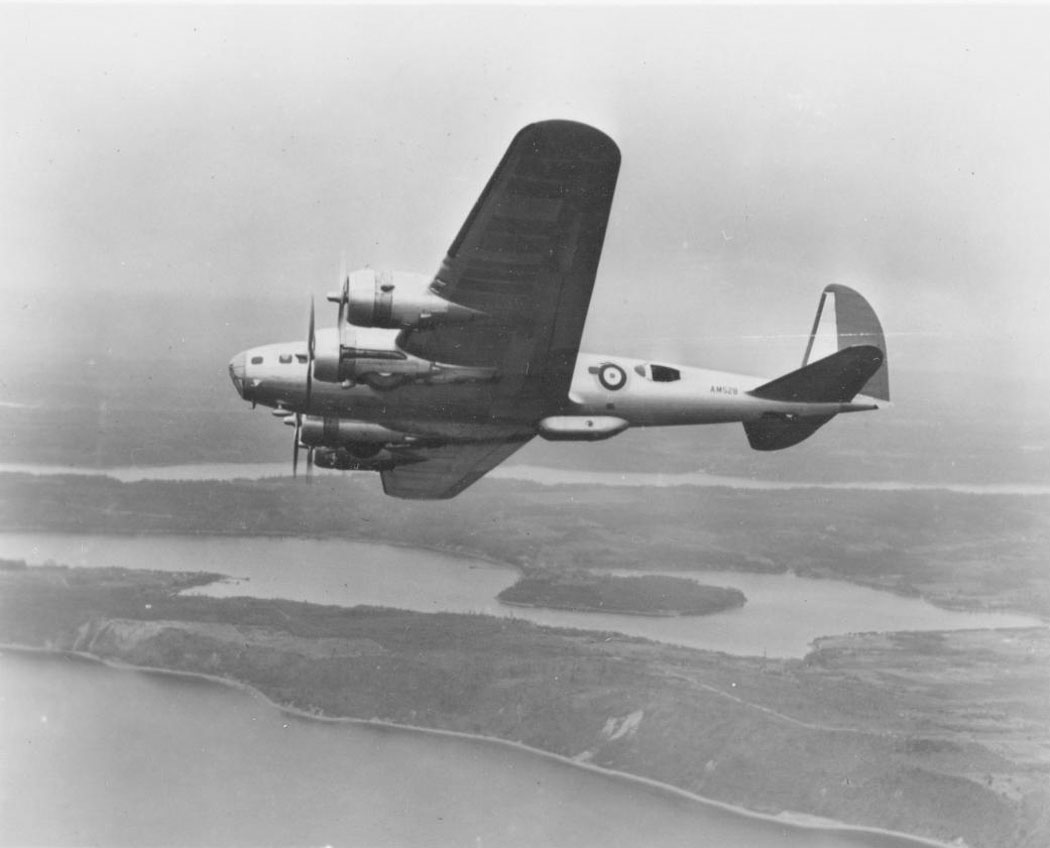The Boeing B-17 bomber, known for its ability to take extreme punishment and stay airborne, was the primary workhorse of the U.S. Army Air Forces during World War II. In all, writes HistoryNet’s Paraag Shukla, the B-17 “equipped 32 overseas combat groups and dropped 640,036 tons of bombs in Europe, more than any other American aircraft.”
Yet the storied bomber got off to an inauspicious start at the hands of the British during its first operational mission on July 9, 1941.
As the so-called Phoney War turned less phony in the spring of 1940, the United Kingdom was still without a serviceable heavy bomber capable of reaching the heartland of the Third Reich. Desperate for the capability, the British acquired 20 B-17Cs from U.S. government, one year prior to Lend-Lease officially taking effect. In return, according to The Drive’s Thomas Newdick, the Brits promised to provide the United States with reports on how the bomber fared in combat.
As it turned out, not that great.
The bombers, assigned to the Royal Air Force’s No. 90 Squadron, were to be used in a high-altitude daylight raid — dubbed by the British press a “stratosphere raid” — on Wilhelmshaven, a major port for the German Kreigsmarine.
The B-17C, fitted with five .30-caliber machine guns mounted in clear “blisters,” was the first Boeing aircraft to have a self-sealing fuel tanks.
At 3 p.m. on July 9, the three bombers — referred to as C, G, and H — took off from England’s Polebrook airfield. Quickly, however, a combination of failing equipment and poor tactics bedeviled the mission.
In an after-action report, the squadron recorded its numerous failings:
Aircraft G and C attacked the primary target between 1650 and 1700 hours from 28,000 and 30,000 feet respectively. Aircraft G dropped 4 x 1,100-pound demolition bombs and aircraft C had 2 x 1,100-pound bombs hang up and only two were released.
Two bursts were observed on the target and a stick of four bombs was seen with the first bomb 250 yards west of the Bauhafen [the harbor where warships were constructed] and the others at 150-yard intervals to the southeast. Electrical failure of both cameras prevented photographs from being taken….
[German fighters] climbed and approached on the starboard beam closing to about 600-800 yards when one of them appeared to go into an involuntary spin and was seen still spinning about 600 feet below. The second aircraft broke off the attack and followed the first one down. No fire was exchanged.
Aircraft H experienced loss of oil at 28,000 feet and abandoned the primary task….Lateral flutter due to oil freezing on the tailplane and building up to about 7 inches thick, and consequent vibration was experienced after bombing. This was eventually overcome by losing height to 15,000 feet at which height the oil thawed and cleared the tailplane. All four airscrews [propellers] were feathered in succession, but this had no apparent effect on the vibration.
Between mechanical failures in releasing the bombs, navigational malfunctions due to freezing temperatures, and oil leaks, the first combat flight of the B-17 was decidedly unsuccessful. Two subsequent missions yielded similar outcomes. However, important lessons were gleaned despite the ineffectual results.
“The Royal Air Force’s tactics called for the bombers to operate individually or in small groups, instead of the huge formations of aircraft providing mutual defensive fire, as proposed by the U.S. Army Air Forces (USAAF),” writes Newdick.
Furthermore, the British were operating with the Sperry bombsight, which was inferior compared to the much-hyped but nevertheless top-secret American Norden bombsight.
Yet the Allies were heartened by the bomber’s long-range capabilities.
Boeing eventually went back to the drawing board and produced a succession of improved variants. Its final model, the B-17G, was armed to the teeth with no less than 13 .50-caliber machine guns, including two jutting out from the chin turret.
The B-17 found historic success under General Henry “Hap” Arnold’s Eighth Air Force and, in 1944, with the introduction of the long-range fighter escort, the North American P-51 Mustang, the Allies turned the tide in the skies of Europe.
So, despite its fraught combat debut, the revamped B-17 soon earned its fearsome nickname—the Flying Fortress — becoming a symbol of American willpower and industrial might.





